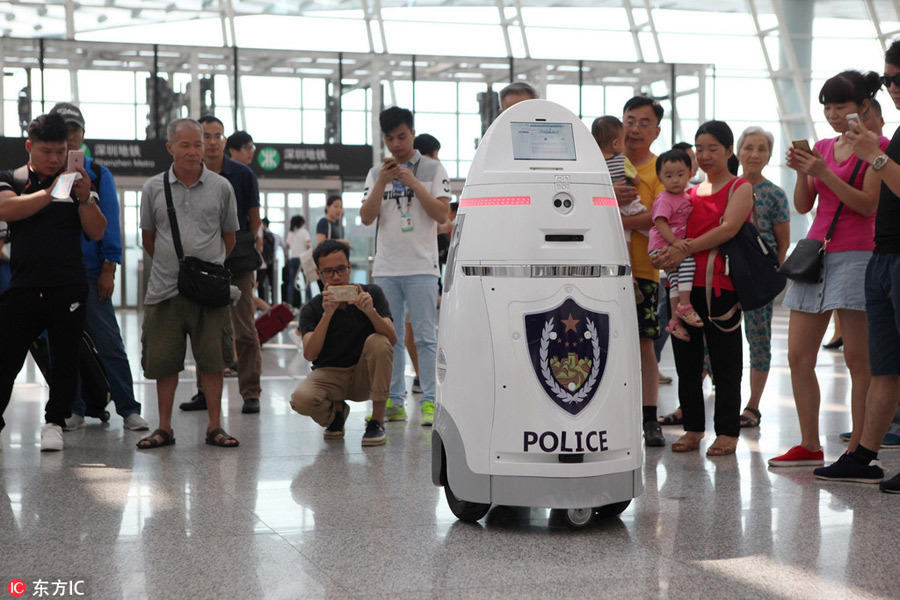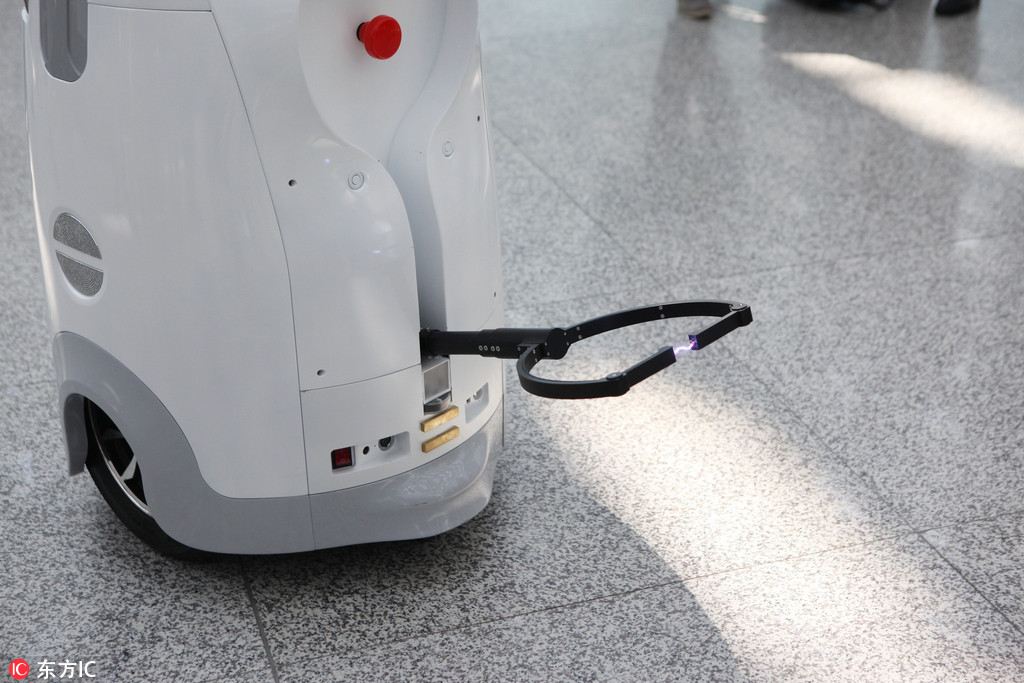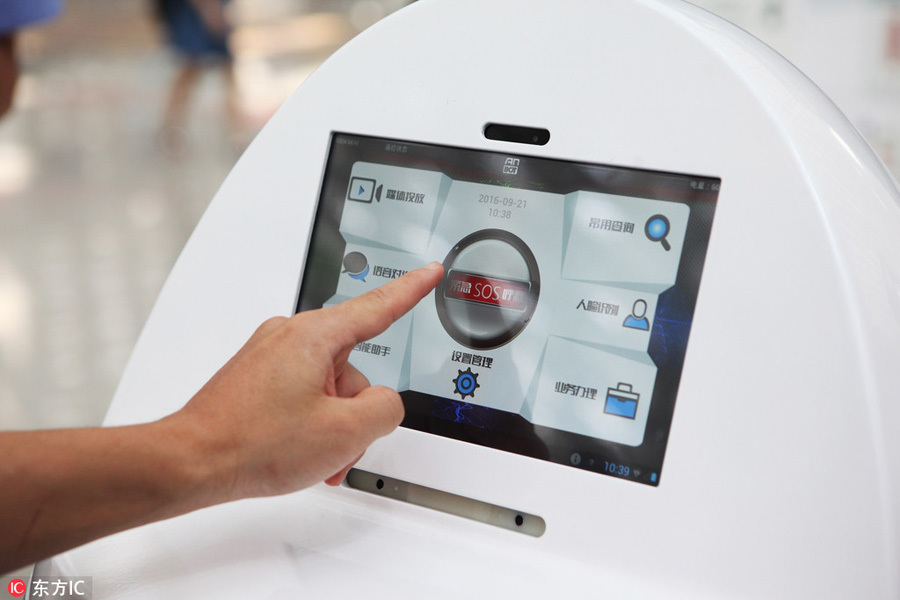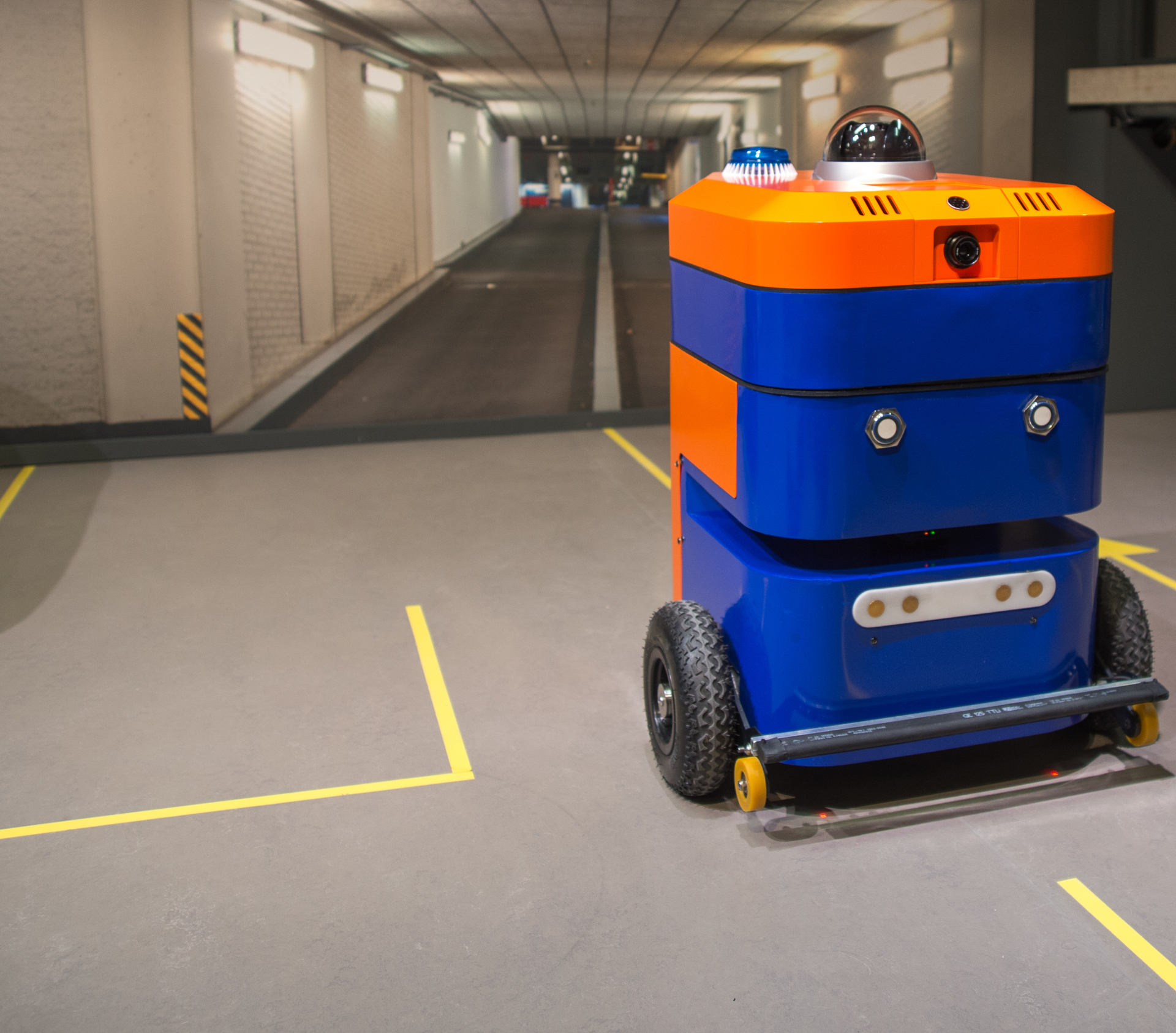Chinese robot guard with AnBot stun guns on patrol

In Shenzhen, the first patrol robot for work with the civilian population, which has weapons, began work. AnBot is similar to its congeners as the form of the egg, and the main function - to search for audiovisual violations and report it to the person. AnBot has a slight difference: it can not only report a threat, but also disperse the crowd with a stun gun.
For the first time the robot was shown in April of this year. The development of the National Defense University of the People’s Liberation Army of China is reminiscent of Dalek from Doctor Who : weighs 78 kilograms, is one and a half meters tall and 80 centimeters in diameter. With external sluggishness, the developers promise a maximum speed of 18 kilometers per hour - comparable to the average running speed. However, the patrol speed of the robot is 1 km / h, nothing is reported about the possibility of driving over obstacles. AnBot works up to 8 hours on one charge.
Expensive recognition system electronics can be placed inside the anti-vandal body of the robot, or carried out somewhere far away from the patrol point. Chinese developers went the second way. The robot identifies threats using the Chinese supercomputer " Tianhe-2 ." The cloud computing service for robots is launched in the supercomputer, which helps to analyze information.
')

AnBot demonstrates its primary and only weapon.
The Tianhe-2 supercomputer (Milky Way-2) now occupies the second line in the Top500 supercomputer rating . 32 thousand 12-core Intel Xeon E5-2692v2 processors, 48 thousand Xeon Phi 31S1P co-processors and 12.4 PB of RAM give 33.86 petaflops or 33.86 quadrillion floating-point operations per second. Since 2013, Tianhe-2 was the strongest computing machine in the world, but in June, another Chinese supercomputer, Sunway TaihuLight, shifted it from the first line of the rating.
The first demonstration is in April.
The manufacturer promises that AnBot is equipped with the functions of map synchronization and dynamic path planning, can determine its location in space and uses in-depth training for analyzing the video stream. Petaflops supercomputer power here is most welcome. The abilities of hundreds of thousands of nuclei would hardly fit inside a single patrol robot.
This directly marks the report on Chinese developments in the field of industrial and military robotics, released in October by the US Congress on the Review of US-China Economic and Security Relations . The document notes that connecting robots to cloud services on Tianhe-2 and Sunway TaihuLight - cloud-based robotics - and big data methods will significantly accelerate the development of fast-learning devices that can use data from huge databases.

AnBot features are crowd control, alarms and people recognition from four high-resolution cameras. If necessary, the security service can activate the electric shocker shown earlier. Ordinary people can call a law enforcement officer from the SOS button on the robot display. Patrolling at the third terminal of the Shenzhen Baoan International Airport and assisting passengers with flight information is only testing of the robot systems. The cost of the robot or its hours of operation is not reported.

South Korean RoboGuard patrols prisons, but he has no weapons.
Other companies have similar solutions. True, they have not yet given a stun gun to the robot. The robots of the American company Knighscope are already roaming the car parks of California . They have about the same egg-like form and function - to inform the guardian of suspicious activity. Knightscope gives a robot for rent for $ 7 per hour, 2-3 times cheaper than a human patrolman.

The local Robocop is ignored at the Stanford Shopping Center, Palo Alto, California .
The SAM robot patrol from Robot Security Systems performs the same functions, but smaller in size — the height of the robot reaches about half the height of a person. No weapons either.

A person poorly adapts to the routine and is not always ready for unexpected situations, and electronic systems do not fall asleep and work equally well. Most often, robots replace a person on tedious and monotonous work: conveyor assembly, driving a car or patrolling the streets. AnBot is not the first robot patrol. Most likely, in the near future there will be more.
Source: https://habr.com/ru/post/398735/
All Articles